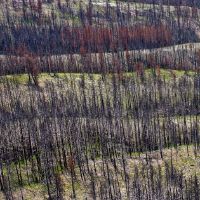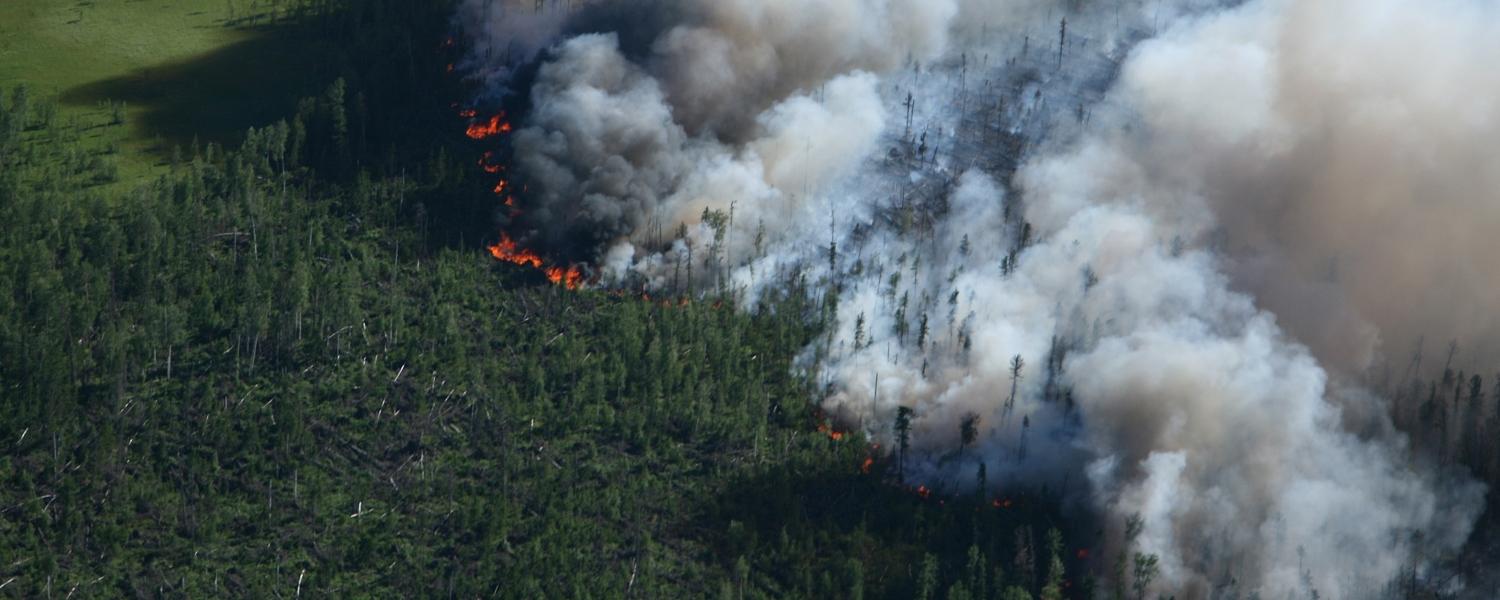Spotlight: Effects of 2023 Wildfires
Summary of the effects of the 2023 wildfire season on Tolko's Northern Operating Area.
Summary of the per cent area burned by wildfires in 2023 in the Northern Operating Area:
Total Area

Forest Type

Forest Stands >120 Years
Harvest Areas
Introduction
As mentioned in Section 2.3, fire is the principal natural disturbance in northwestern Alberta; it is the dominant natural disturbance in boreal forest ecosystems.
- In these forests, fires—along with other natural disturbances such as insect outbreaks and disease—result in a mosaic of stands of different ages from young forests to forests more than 150 years old. This mosaic of ages helps maintain biodiversity across northwestern Alberta.
- However, 2023 was an exceptional year for wildfires in many jurisdictions, including Alberta. Widespread fires in the summer of 2023 altered land bases across the province[1], including large parts of Tolko’s Northern Operating Area.
- Fires are a natural process in forest ecosystems; they do not necessarily burn 100% of the area affected, and burned areas will regenerate. However, high fire rates—particularly if they continue in future years—will affect forest biodiversity and forestry operations.
- In this section, we use preliminary fire mapping to show how 2023 fires affected Tolko’s Northern Operating Area.

The aptly named fireweed thrives in recent burns.
Results
Summary of 2023 Wildfire
The per cent area of the Northern Operating Area that burned in 2023 was:
2023 Fire Effects on Vegetation Types
- Overall, 13.6% of the Northern Operating Area burned in 2023. Burn rates were high across all broad vegetation types. The percentages burned in 2023 were 12–20 times the average annual fire rate from 2010 to 2021, and 6–14 times the combined human footprint and fire rate over that time.
- 2023 burn rates were higher in old deciduous and pine than in younger stands, and similar in old and younger mixedwood and White Spruce stands.
- The large area burned by fires in 2023 substantially lowered the amount of old forest. The loss is particularly significant in conifer stands, where recruitment had already fallen below disturbance rates from 2010 to 2021 (Section 2.3).
- A consistent 17–18% of harvested area burned in the Northern Operating Area, as large fires affected all forest types, including deciduous/mixedwood (17.7%), coniferous (17.5%), stands under 20 years old (17.9%), and stands over 20 years old (17.2%).
- Note that values may be revised when detailed fire mapping is available. Ecologically, we have little information on burned harvest areas as habitat for species, or how they will regenerate.
Detailed Land Base Change including 2023 Fires—All Vegetation Types
Detailed Land Base Change including 2023 Fires—All Vegetation Types. For the Northern Operating Area, the average annual percentage (%) of each vegetation type disturbed between 2010 and 2021 by fire, non-forestry (other) footprint, and forestry footprint, compared to the percentage of area burned by the 2023 fire.
Detailed Land Base Change including 2023 Fires—Old (>120 years) Forest
Detailed Land Base Change including 2023 Fires—Old (>120 years) Forest. For the Northern Operating Area, the average annual percentage (%) of old forest (>120 years) disturbed between 2010 and 2021 by fire, non-forestry (other) footprint, and forestry footprint, compared to the percentage of area burned by the 2023 fire.
References
Huggard, D., B. Allen, and D.R. Roberts. 2024. Effects of 2023 wildfires in Alberta. ABMI Science Letters Issue 8: March, 2024. Available at: https://abmi.ca/publication/642





